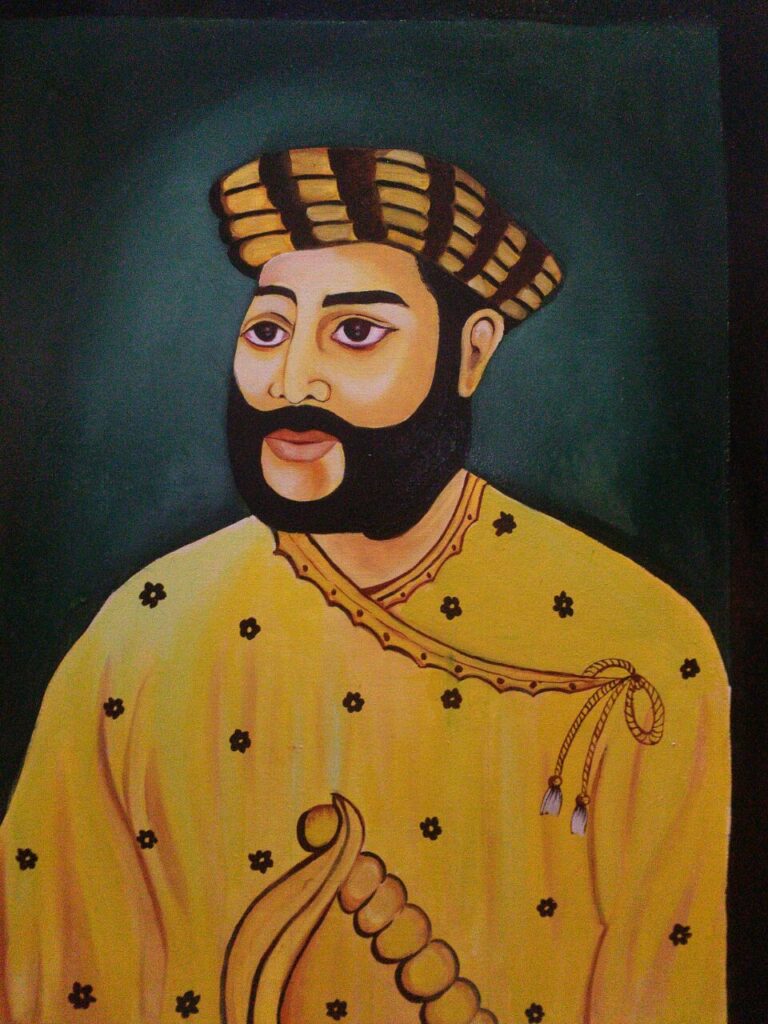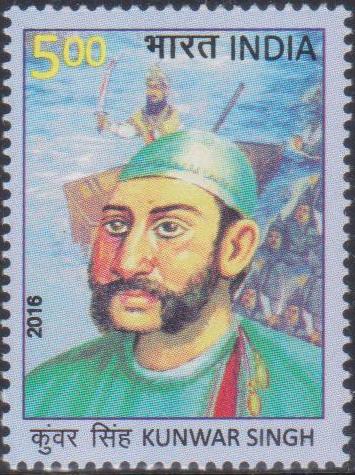Content
Background
Veer Kunwar Singh was the leader of Bihar region during the first war of Independence. He was born in April 1777 at Jagdishpur (Bihar). His father i.e. Raja Shahabzada Singh was the direct descendant of the great Rajput king Raja Bhoja whose anecdotes are still alive in stories and folks songs. His mother’s name was Rani Panchratan.
For decades this Rajput family of Bihar was protecting the region from the British forces. When the war broke out Kunwar Singh was 80 years old. Many people cannot even stand in this fragile period of life but for Kunwar Singh this was the time to fight the invaders (East Indian Company).

From the period of Mughals, the use of Guerrilla warfare became inevitable for the Indians. The great Indian kings like Maharana Pratap and Chhatrapati Shivaji Maharaj both used this method of warfare against the Mughals to stop their advance.
Just like his ancestor Veer Kunwar used Guerrilla tactics against the British invaders. Through his fierce guerrilla warfare, Kunwar Singh held the British forces for almost a year. This was perhaps a great achievement from the perspective of the mutineers who neither had the experience of using organized tactics military nor the firepower as compare to British forces.
The outbreak of the Rebellion
The revolt of 1857 was the first major armed insurrection against the colonial British government. The policy of Doctrine of Lapse played a significant role in the revolt. Furthermore, the introduction of Christian Missionaries completely changed the century-old cultural tradition of India.
But the immediate cause of the revolt was the introduction of Greased Cartridges. The new Enfield Rifles had to be greased with animal fat of Cow and Pigs. This move of the British Government (East Indian Company) completely backfired and now the Indians decided to throw out the alien rule from their country at any cost.
The great mutiny took place at the time of Lord Canning. The leaders and center of the Revolt are as follows.
- 1 Kanpur- Nana Saheb, Tantia Tope
- 2 Delhi -Bahadur Shah Zafar, Bhakt Khan
- 3 Jhansi -Rani Lakshmi Bai
- 4 Faridabad -Maulavi Ahmadullah
- 5 Lucknow- Begum Hazrat Mahal
Veer Kunwar Singh: The Vanquisher of the East Indian Company Forces
However, the revolt of 1857 itself is an ocean of unending stories of rise and fall. But here we will only cover the revolt led by the Brave Kunwar Singh in Bihar.
On 27th July, under the charismatic leadership of Kunwar Singh, the mutineers captured the district headquarters at Arrah. But sooner the siege was lifted by the British forces under Major Vincent Eyre on 3rd August.
Note: Kunwar Singh’s brother i.e Amar Singh also took part in the revolt. Both of them together are known as the leader of the Bihar region during the revolt.
The commander-in-chief of Kunwar Singh army was Hare Krishna Singh. Many historians praised him for motivating Kunwar Singh to lead the rebellion at the age of 80 years.
In the year 1858 (March) when the impetus of the rebellion was going in the favor of the British forces, Kunwar Singh and his men defeated them at Azamgarh (Uttar Pradesh). The British were no doubt superior to the Indian forces of Kunwar Singh. They had many advanced weapons, intelligent military generals, artillery support, and much more. Yet the all these advanced gears proved useless against the Rajput valor and patriots of Bharat Mata.

Later , Singh returned Jagdishpur on 23 April 1858 and here he again defeated the British forces which were under the command of Captain Le Grand. This battle was a complete blood bath for both sides but the Indians came victorious and the British Captain i.e Le Grand died in this battle. After this battle, he brought down the Union Jack from the Jadishpur fort and hoisted the Indian Flag on the Jadishpur Fort.
One major event that worth mentioning is that when Kunwar Singh was crossing the Ganga River. The British forces open fire at Kunwar Singh and his men. During this engagement, a bullet pierced the wrist of Singh. Immediately Kunwar Singh cut off his hand in order to avoid much damage to his arm and consequently his health.
Veer Kunwar singh prior to this battle defeated several other eminent British commanders too. Some of them were Brigadier Douglas, Lord Mark.
On 26th July due to the vicious injuries Veer Kunwar Singh attained martyrdom. Against all odds, Veer Kunwar Singh didn’t even back an inch and followed the code of a Kshatriya as his great ancestor had done.
He attained martyrdom not as a fighter who was captured by the invaders but as a winner who defeated and crushed every single enemy soldier. He lived up to the spirit of the famous slogan which is very popular among the Rajputs i.e. Veer Bhogya Vasudhara i.e. The Brave Shall Inherit the Earth.
Later the struggle for independence was continued by the brother of Kunwar Singh i.e. Amar Singh.
In 1966 to honor the indomitable courage and valor of Veer Kunwar Singh, the government of India released a stamp in his honor.

LIKE WHAT WE ARE DOING? DONATE TO DHARMAYUDH !
If you Support what we are doing and would like to contribute to help us grow and reach more Indians to teach them more about such forgotten historic Indian Heroes and stories, please consider donating any amount. It will help us grow.

